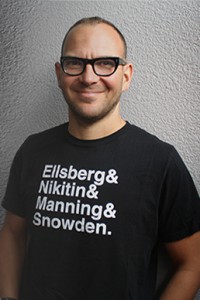Spotlight on: Marcela Bolívar, Artist

 MARCELA BOLÍVAR is a Colombian digital artist based in Germany. Currently, she works as an illustrator for various international publishing houses while developing further her personal work. Her work aims to disengage photomontage of its technologic and automated nature, pushing the limits of photography as she merges it with a variety of pictorial expressions. The mixture of various media such as photography, painting and sculpture brings forth a world that lingers between reality and fiction, disguise and truth.
MARCELA BOLÍVAR is a Colombian digital artist based in Germany. Currently, she works as an illustrator for various international publishing houses while developing further her personal work. Her work aims to disengage photomontage of its technologic and automated nature, pushing the limits of photography as she merges it with a variety of pictorial expressions. The mixture of various media such as photography, painting and sculpture brings forth a world that lingers between reality and fiction, disguise and truth.
Talk about interesting cover projects. What’s it like to illustrate an author’s work? How do make the art your own while still honoring the source material?
One of the most interesting projects I’ve had was actually this year (2021). Suntup Editions hired me to illustrate the multi-generational novel Blackwater by Michael McDowell. Originally this novel was published in several volumes and the idea was to illustrate each chapter of the story. In total there were seven images, counting the dust jacket on the cover. I was not familiar with the story before, and in addition to receiving a summary with the most important elements I started listening to the chapters while doing chores or finishing other projects. Slowly the ideas emerged, and the immersion in the characters’ lives allowed me to be clear about the symbols, objects, and places that would be repeated. After making the color sketches with photographs and being approved by art director Rebecca Dornsife, I began to refine the details and atmosphere of each of the images.
I’m usually very inspired by this kind of dark subject matter where the force of nature confronts the human presence relentlessly, so the ideas came flooding in, and I had to edit several of the sketches I set out to do. I’m even hoping to do a couple more images inspired by these.
I also really enjoyed working on the Plague Birds cover for Jason Sanford. The atmosphere of his world, the description of his heroine, and the climax he described in his story were very inspiring, as well as his having given me an artistic and creative freedom that I appreciate so much!
 You use photography, painting, 3d, and sculpting elements. Are all of your canvases mixed media? Tell us a bit about your art process!
You use photography, painting, 3d, and sculpting elements. Are all of your canvases mixed media? Tell us a bit about your art process!
Almost everything I do is a combination of painted and scanned textures, materials that I sculpt with plaster or cold porcelain, or elements that I collect and paste and then photograph (such as plants, seeds with special shapes, stems with interesting textures, etc.). I already have a quite varied and ready-to-use personal image bank that has marked my style and has helped me to be more practical in letting my creativity flow. All these elements I assemble and merge them in photoshop, sometimes making custom brushes or simply making each of these photographs belong to a new invented world.
I use many, many layers, but in the end I usually collapse everything and apply textures deliberately, many of these based on paintings I do with acrylics and random stains. The result is something that is as much part of a digital artificiality as it is part of the reality I see every day in nature and in the materials I use.
The plant life in your paintings is sometimes just as lively as the portraiture! Can you talk about your surreal take on botanical illustration?
Thank you very much! I am very happy that it is a definitive characteristic in my work because I put a lot of effort and love into letting the organic forms that attract and inspire me so much shine. In the years that I have been creating, I noticed how the dense, dark, and lush Colombian landscape slowly invaded my images, making much of my work focus on vegetation as another protagonist. This realization inspired my master thesis Altera Natura, a series of fantastic plants inspired by a fusion of my extensive bank of plant images. The images used were taken in Colombia, Europe, and China, and inspired the botanical connection between colonization, globalization, and technology. It was an eye-opening investigation into the profound significance of plants, both in the intimacy of our homes and in our very existence as a civilization.
Now, this series has helped me to understand my work as an unfinished garden in the midst of my ideas, a garden in my dreams that with each image I make resolves a part of its own labyrinth.
 How do you keep it fresh for yourself and keep learning new techniques and improving your craft? Have there been any recent changes or discoveries in your art process, or do you feel settled into something that’s really working for you already?
How do you keep it fresh for yourself and keep learning new techniques and improving your craft? Have there been any recent changes or discoveries in your art process, or do you feel settled into something that’s really working for you already?
I feel that the MA in photography helped me understand the meaning of my practice and how to fearlessly merge elements that I found discordant before, especially when it comes to something artificial or something organic and fluid. I have learned how to better use artificial lights to create more appealing atmospheres in my images. But I think for now I would like to explore more sculpting and making dioramas to include in my images. I have always been attracted to molding with my hands, whether it be masks or crowns, and I would like to make more objects without a doubt.
Is there one thing you wish you’d learned early on about making art or working as a commercial artist?
I think it’s definitely important to know what you want to do and who you want to work with. When you’re clear on that go to them! Write those emails! It was something that took me a while to undertake on my own.
Is there anything new you’d like to tell our readers about?
I’m currently doing several covers for fantasy and YA stories for both independent and established publishers. The process is always a lot of fun and the stories are always an exciting surprise.
A few months ago I started working with Magic: The Gathering, and I’m very excited to see my style applied to the imagination of this world!
 While you are here, please take a moment to support Locus with a one-time or recurring donation. We rely on reader donations to keep the magazine and site going, and would like to keep the site paywall free, but WE NEED YOUR FINANCIAL SUPPORT to continue quality coverage of the science fiction and fantasy field.
While you are here, please take a moment to support Locus with a one-time or recurring donation. We rely on reader donations to keep the magazine and site going, and would like to keep the site paywall free, but WE NEED YOUR FINANCIAL SUPPORT to continue quality coverage of the science fiction and fantasy field.
©Locus Magazine. Copyrighted material may not be republished without permission of LSFF.






